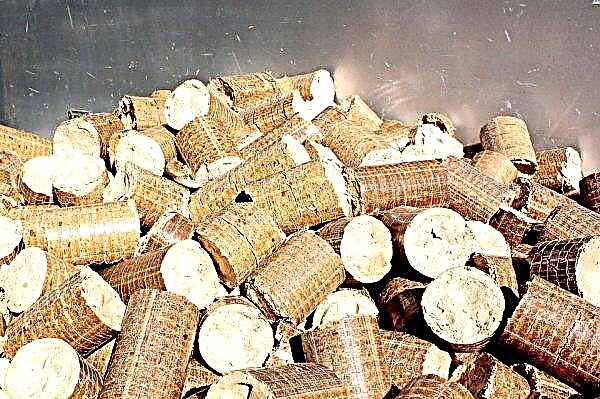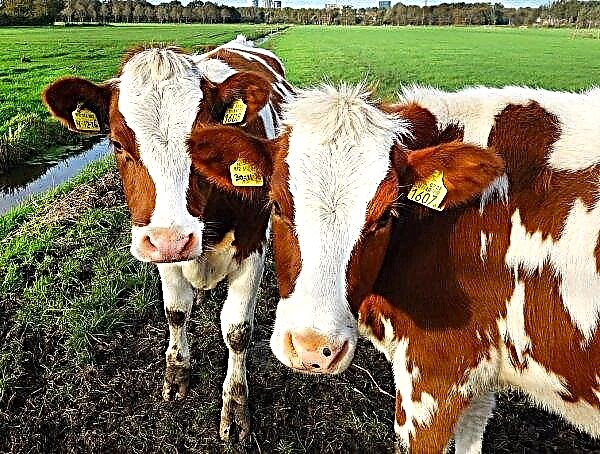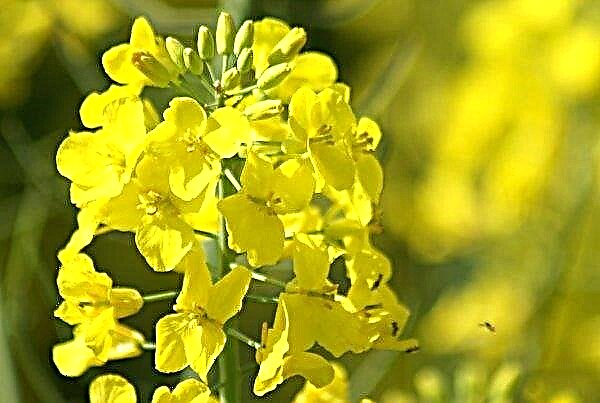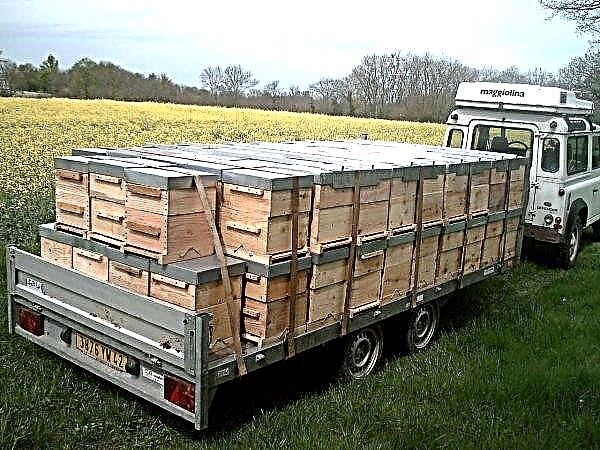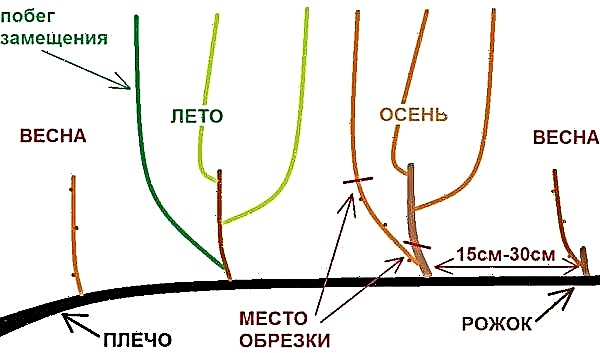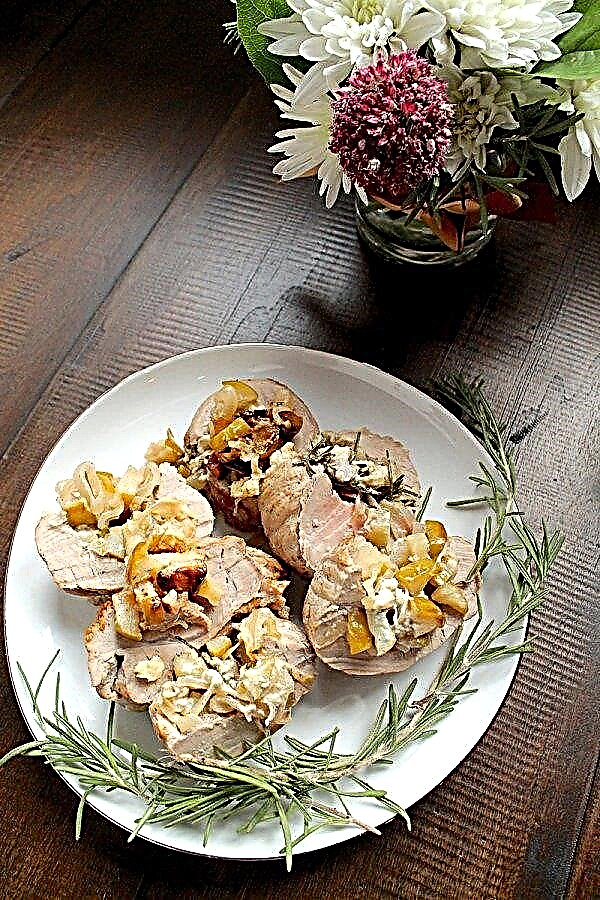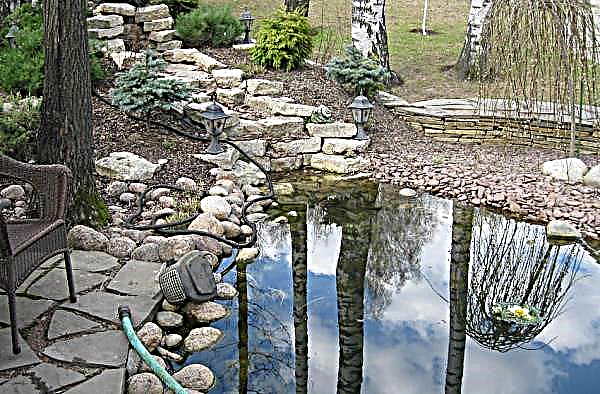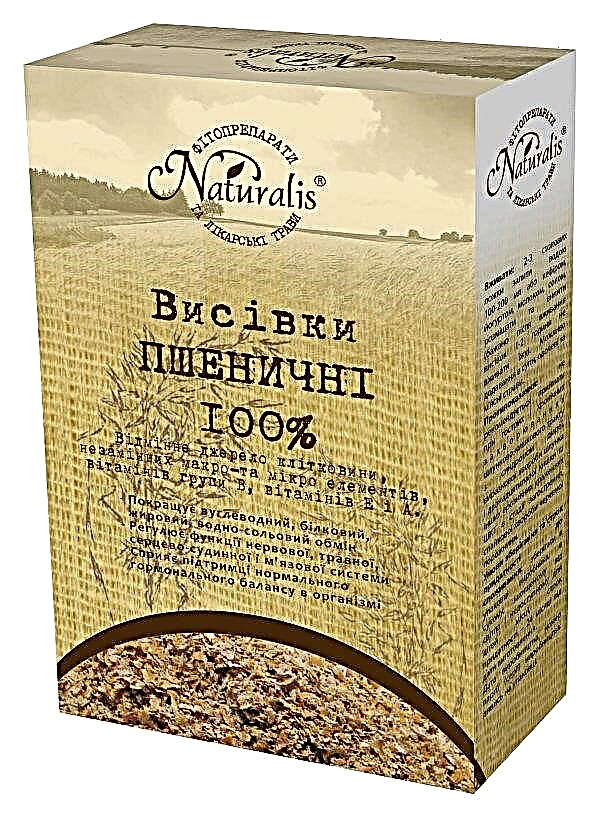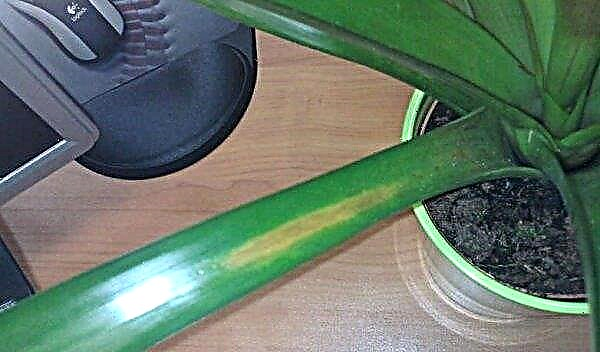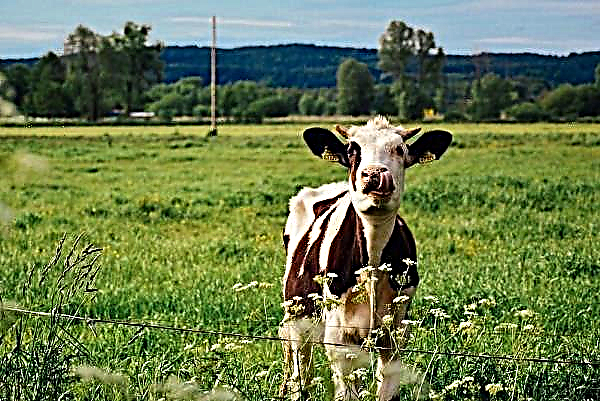The Acrocon spruce variety belongs to the type species of Common (European) Spruce (from Latin Pícea ábies). The etymology of the name of the coniferous tree “Acrocona” speaks of its external peculiarity: from the Latin language “acro” means the extreme part, and as you know, the plant stands out among its other relatives with bright cones growing on the final part of the branches of this decorative culture. Such a specific appearance attracts people more and more often and makes it possible to use this variety of spruce in landscape design.
Grade description
Like every coniferous plant, Acrocon has its own special features, which distinguishes it from its relatives.
Did you know? The considered coniferous tree variety was noticed back in the second half of the 19th century by specialists from the Swedish city of Uppsala. And to sell the seedlings of this spruce has already begun since 1890.
The culture is characterized by such a botanical description:
- Wood. This variety is characterized by an irregular crown, which has a wide conical shape. Basically, the branched part of the tree does not have a “leader”, which gives the tree a bushy appearance with hanging branches. An adult plant can reach a maximum of five meters in height and have a diameter of up to 3-4 meters. The tree trunk is straight and has a brownish color, which changes to brick with age.
- Needles. The plant is covered with dark green thin pointed needles, which have a tetrahedral shape. The needles retain their color throughout the year, and crumble only after the 12th year of life.
- Bloom. In May, male spikelets of a reddish color, as well as female ones of a purple color, are visible on the tree.
- Bumps. This part of the tree has a cylindrical shape. Immature cones are highlighted in red, and mature cones are gray-brown. In an adult plant, they reach large sizes.
The life of the variety in question can reach 50 years, but the plant usually has a height of 3-4 meters. Specialists can not attribute this decorative culture to dwarf or tall coniferous trees. Cones appear already on the young trees of Acrocon, located on the extreme part of asymmetric tree branches.
Did you know? On 10–At the 15th year of life, ate its main root dies, and the lateral root system takes on the main role.
In landscape design
The considered variety of spruce has already gained popularity among landscape designers since the 20th century. The plant is often used as a decoration for ponds, rocky terrain. Young specimens often become part of rockeries and rock gardens. Many owners of large areas prefer Akrokone as a coniferous culture that cleans the air and improves the microclimate of the area.
 This plant is not often found in parkland or other open areas. Mostly they prefer to plant culture in private personal plots.
This plant is not often found in parkland or other open areas. Mostly they prefer to plant culture in private personal plots.
Hedge
Spruce Acrocona can often be found as a hedge.
This landing has many advantages:
- protects from gusts of wind;
- helps to divide the territory into the necessary sections;
- masks “errors” on the site in the form of unfinished buildings, unformed structures;
- allows you to hide private territory from unwanted guests;
- will make an excellent background for flower beds, ponds, fountains.

Zonely dividing the territory with hedge of spruce, it is recommended to select plants up to 150 cm high, thereby avoiding excessive density and density of thickets.
Due to its asymmetry, it is possible to create such various forms of hedges from this variety of spruce:
- rectangular;
- trapezoidal;
- elliptical;
- trellis.
Important! When buying Acrocon conifer seedlings, you must initially think about the appearance of a live fence, the size of the culture and other features. For the right choice of plants for planting, it is recommended to consult with specialists or sellers.
Songs
This variety of spruce is perfect for various exotic gardens. The acrocon is often planted on sites of various styles: oriental or modern. Coniferous compositions will be an excellent decoration for the “stone gardens”.
The considered variety of spruce will look advantageous in combination with both dwarf and tall conifers. Often you can meet the Acrocona, which is part of the heather gardens. Green needles with bright buds blend perfectly with white flowers. This variety is recommended for use in rock gardens and exotic gardens. A spruce is suitable for decorating a site in the Art Nouveau style, for composing a composition in the Japanese style, for designing a "rock garden".

Many landscape designers prefer to combine Acrocona with such low-growing varieties of spruce as Globoza go Nidiformis for landing on rocky slides. This variety of spruce is also well suited for group compositions with prickly Hupsi, deciduous shrubs, as well as with birches and maples.
Landing rules
Before planting, it is necessary to take seriously the choice of acrocon spruce seedling. To do this, it is best to consult a store or nursery consultant. You should not buy planting material on the market from an unverified manufacturer.
The next step before landing is choosing a place. The site should be sunny, semi-shady, away from groundwater. Saline soil is considered unsuitable for planting spruce, but loamy or sandy loamy soil would be an excellent option for Acrocona. It is necessary to plant the plant in early spring, as soon as the snow melts. An acceptable option is also considered an autumn landing (before frost).

The process of planting a seedling is carried out according to this principle:
- It is necessary to prepare a landing pit 0.5-0.7 m deep.
- Place a drain of sand or broken brick (layer of 30 cm).
- Add water from the turf leaf mixture, as well as peat and sand.
- Place the planting material in the pit so that the root neck of the seedling is level with the surface of the earth.
- Group planting involves a distance of at least 3 meters between trees.
- After planting a seedling, it must be watered intensively, and also fertilize (100 g nitroammofoski).

Care Features
Young trees of spruce Acrocon require regular maintenance. Loosening of soil around the crop is carried out after the tree has been watered. In this case, the earth must be deepened by 5-6 cm, but no more, because the first years of life, the root system of the plant is located close to the surface of the earth.
Important! A young tree of this variety of ordinary spruce requires shelter with specialized gardening material for wintering. Strong winds and frosts can not only damage, but also destroy the Acrocona tree. And in the summer, it is necessary to shade a young plant in order to avoid burns.
Acrocona is considered an unpretentious coniferous tree, but it does not tolerate stagnation of water and drought in the first years of life. From June to August, the crop irrigation procedure should be carried out, which is carried out after sunset. The Acrocon variety also requires special fertilizer for conifers, which is applied twice a season.
The tree in question tolerates pruning, which is recommended for summer. Despite the fact that the common spruce Acrocon is quite resistant to various misfortunes, there are cases when the plant requires help in the fight against spruce aphids, spider mites, as well as fusarium and necrosis of the bark.
A solution of Bordeaux mixture will help get rid of diseases. Aphids will destroy the soap mixture, but it is necessary to cover the root system of the culture. To get rid of ticks, the gardener needs to purchase drugs such as Fitoverm or Neoron.
Thus, Acrocon spruce is an excellent option for planting in various personal plots as a hedge, as well as in group compositions in unusual gardens. Due to its good characteristics, attractive appearance, this variety is gaining more and more popularity among landscape designers.

